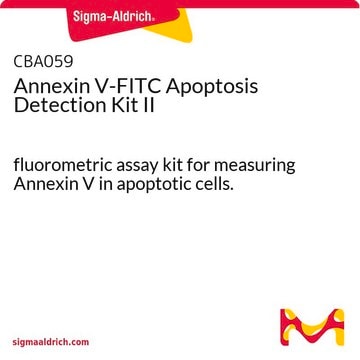Wichtige Dokumente
T4427
Terminale Transferase aus Kalbsthymus
buffered aqueous glycerol solution
Synonym(e):
Terminale Deoxynucleotidyl-Transferase
About This Item
Empfohlene Produkte
Qualität
Molecular Biology
for molecular biology
Form
buffered aqueous glycerol solution
Mol-Gew.
60 kDa
Konzentration
>5000 U/mL
UniProt-Hinterlegungsnummer
Fremdaktivität
Exonuclease and endonuclease, free
Lagertemp.
−20°C
Angaben zum Gen
cow ... DNTT(281120)
Suchen Sie nach ähnlichen Produkten? Aufrufen Leitfaden zum Produktvergleich
Allgemeine Beschreibung
Anwendung
- Addition of homopolymers to vectors, inserts and cDNA for cloning
- Labeling the 3′-end of double- and single-stranded DNA with non-radioactive or radioactive labels
- Carrying out in vitro mutagenesis by adding single nucleotides to DNA
- Use in TUNEL assays
Komponenten
Einheitendefinition
Hinweis zur Analyse
Ähnliches Produkt
Signalwort
Danger
H-Sätze
P-Sätze
Gefahreneinstufungen
Resp. Sens. 1
Lagerklassenschlüssel
11 - Combustible Solids
WGK
WGK 3
Flammpunkt (°F)
Not applicable
Flammpunkt (°C)
Not applicable
Persönliche Schutzausrüstung
Eyeshields, Gloves, multi-purpose combination respirator cartridge (US)
Hier finden Sie alle aktuellen Versionen:
Besitzen Sie dieses Produkt bereits?
In der Dokumentenbibliothek finden Sie die Dokumentation zu den Produkten, die Sie kürzlich erworben haben.
Unser Team von Wissenschaftlern verfügt über Erfahrung in allen Forschungsbereichen einschließlich Life Science, Materialwissenschaften, chemischer Synthese, Chromatographie, Analytik und vielen mehr..
Setzen Sie sich mit dem technischen Dienst in Verbindung.








